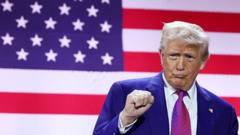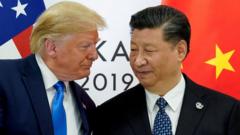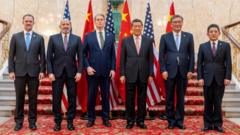Amid the backdrop of impending tariffs, trade talks between the U.S. and E.U. reflect a complex web of challenges and opportunities as both parties seek a resolution.
### U.S.-E.U. Trade Talks Signal New Directions Amid Tariff Tensions

### U.S.-E.U. Trade Talks Signal New Directions Amid Tariff Tensions
The United States and the European Union engage in renewed trade negotiations as tariffs loom, exploring potential compromises.
President Trump’s decision to postpone 50% tariffs on E.U. imports has set a new tone in discussions, with E.U. Trade Commissioner Maros Sefcovic engaging with U.S. Commerce Secretary Howard Lutnick. Following a strategic phone conversation between Trump and European Commission president Ursula von der Leyen, optimism is in the air for a resolution before the July 9 deadline for tariffs' implementation.
Despite hopeful rhetoric, the negotiation process remains precarious, characterized by differing priorities between the U.S. and its European counterparts. The European commission suggested an elimination of tariffs on industrial goods, refining retaliatory tariff lists targeting American products such as machinery and bourbon.
Yet, the U.S. administration’s requests for alterations to the European consumption tax and digital regulations persist, while E.U. officials remain firm in their stance against these specific adjustments. The path toward consensus, while underway, is fraught with ambiguity as both sides navigate a landscape shaped by economic interest and regulatory policy, underscoring the complexities involved in international trade relations.
Despite hopeful rhetoric, the negotiation process remains precarious, characterized by differing priorities between the U.S. and its European counterparts. The European commission suggested an elimination of tariffs on industrial goods, refining retaliatory tariff lists targeting American products such as machinery and bourbon.
Yet, the U.S. administration’s requests for alterations to the European consumption tax and digital regulations persist, while E.U. officials remain firm in their stance against these specific adjustments. The path toward consensus, while underway, is fraught with ambiguity as both sides navigate a landscape shaped by economic interest and regulatory policy, underscoring the complexities involved in international trade relations.























